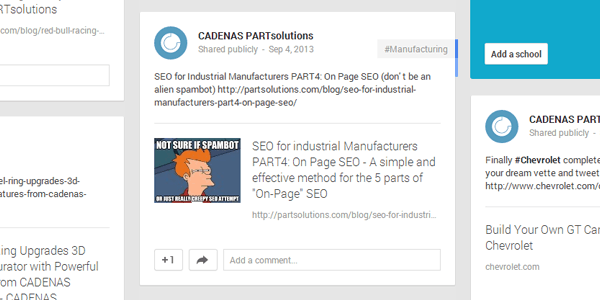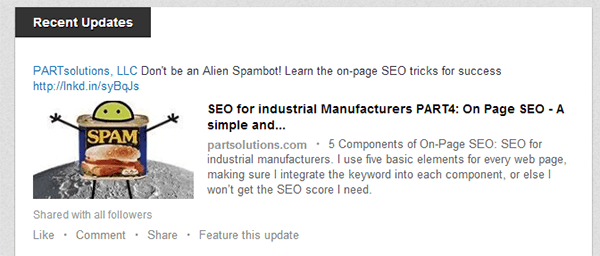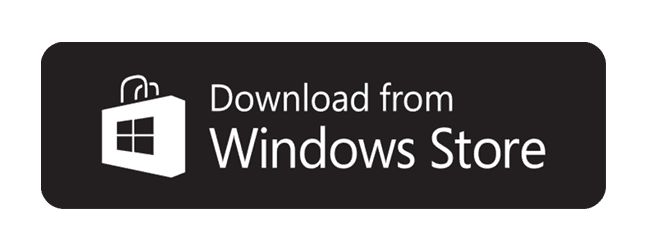SEO for Industrial Marketers Part 5: Social Media and Inbound Links
Rule of thumb: if you don’t feel comfortable linking to their site – you don’t want them linking to you.
Now that every aspect of your web page or post has been optimized for your particular keyword, we’ll look at a few “bonus” ways to ensure the SEO score for the keyword is as high as possible.
To this point everything we have done is focused on getting the peak position on Google or Yahoo (or any search engine). The problem is, there are many other ways people are finding information nowadays, and there are more ways that the search engines find pages to rank.

Get Inbound
Inbound links are a powerful way to show Google that your site’s for real and you have keyword authority. The trick is getting those inbound links. Sure there’s plenty of weasels and spammers out there that’ll hook-you up with paid links, but those will get you nowhere – fast. The best way to get inbound links is to use your network of people and sites you can cooperatively link to. This means magazines, vendors, customers, manufacturers of complementary products etc. Get in touch and tell them why they need your content on their site and why you need theirs on yours.
Rule of thumb: if you don’t feel comfortable linking to their site – you don’t want them linking to you.
Another great way that you can take charge of your inbound links is to leverage your social media profiles. Each social media outlet counts as a linking website which you can use to direct visitors and search engines to your site.
Gotta play the big boy’s game
When Google announced Google+ (G+) a couple of years ago, their goal was to take on Facebook head-to-head. In order to give themselves a leg up in this competition, they score G+ posts and links higher in their search than most anything else. Long story short, play their game, or get left in the dust.
Best practice: Create a Google+ page for your site and post all new articles to your news feed. Make sure to use your keyword in the title and description, and link to the appropriate page on your site. This almost creates a double score for a post. It gives a search bump for posting with the keyword on Google+, plus it creates an inbound link, which also adds to your score. See example below

Tweet about it
Twitter is now being crawled by the search engines for keywords and hashtags. The difference is, that other search engines give a bump to Tweets, where G+ posts are pretty much only favored by Google. Another bonus for Tweets is the large and active subscriber base on Twitter, all with access to search the site for relevant information.
Best practice: On your company Twitter account, Tweet every new post. Make sure to include the keyword in the description and add an appropriate hashtag to the tweet. This will give your post another inbound link, as well as creating a searchable web-entry which can be found within twitter, as well as all of the big search engines.
Side note: A “#” or hashtag is a way of making a keyword searchable in most social media platforms.

The Business Link
Linkedin is the authoritative social media outlet for business professionals; the only issue is the posts are not searchable by external search engines like Google. Don’t let this deter you from utilizing all that is available from Linkedin, which is possibly the most powerful of all of the social media sites for business. Use it to build inbound links and to drive visitors to your site.
Best practice: Post new articles on both your personal page but also your company page. This will allow those who follow either to see the updates and link to your site. Also make use of Linkedin “groups,” these are targeted communities for thousands of industries and topics, search and join these. Post your relevant articles early and often here.
In your face
Although it’s much less crucial than G+ or Twitter for generating search engine results, Facebook still has it’s place in the SEO world. Now with their internal search feature, users can scour the site for relevant posts. It’s only a matter of time until it’s fully searchable by Google, so having the info indexed into their site is a good head start. I would do a FB post exactly as I would do a G+ post: Keyword in title, description with keyword and link to the page with an image.
More than play
Often times social media is looked at by employers as a toy or a reason for workers to “goof-off,” but the right hands, the value far outweighs the cons. Successful inbound marketers make the most of all social media outlets, they’re free and powerful tools. The trick is to post consistently to all outlets to maximize their power.
Adam Beck
Latest posts by Adam Beck (see all)
- 2025 Industrial Marketing Summit Announced for February 26-28 in Austin, TX - May 31, 2024
- Engineering the World’s Longest Solar Eclipse - April 9, 2024
- How AR CAD Models and Apple Vision are Helping Engineers Become Tony Stark - March 12, 2024





